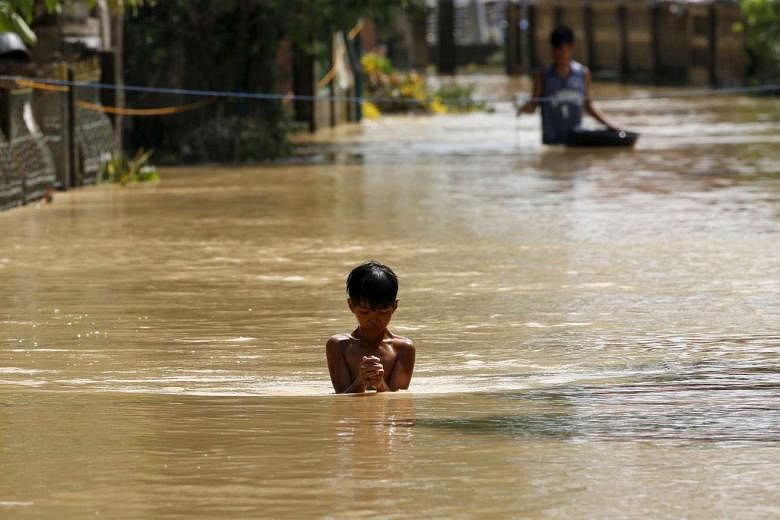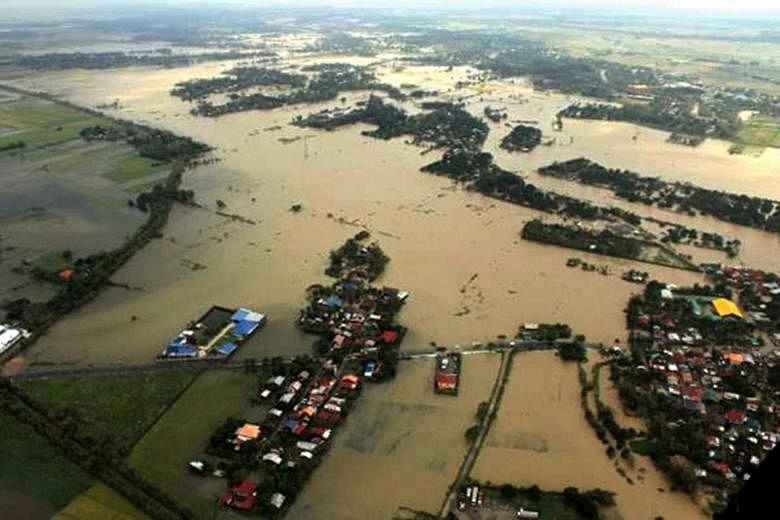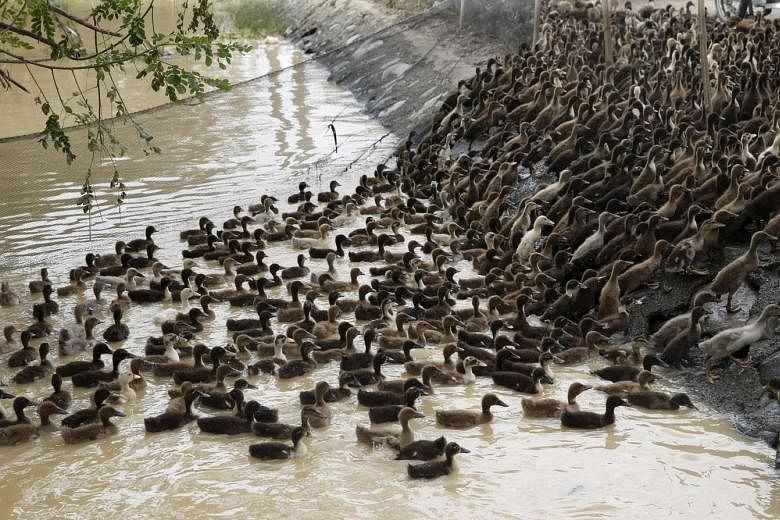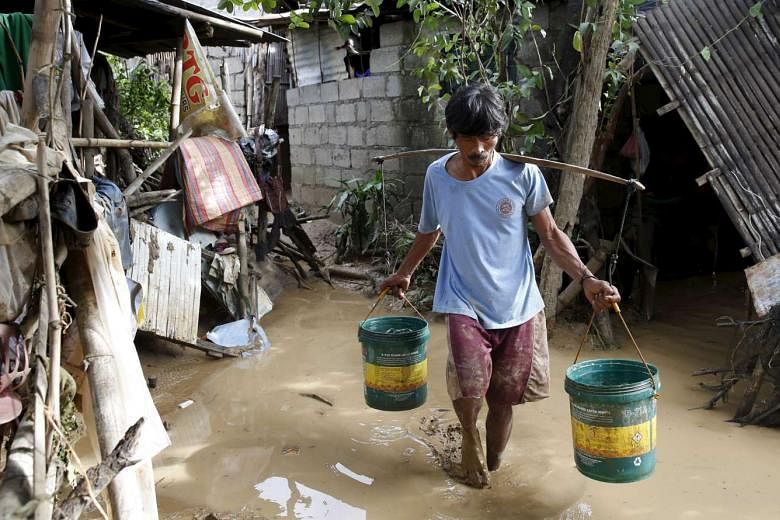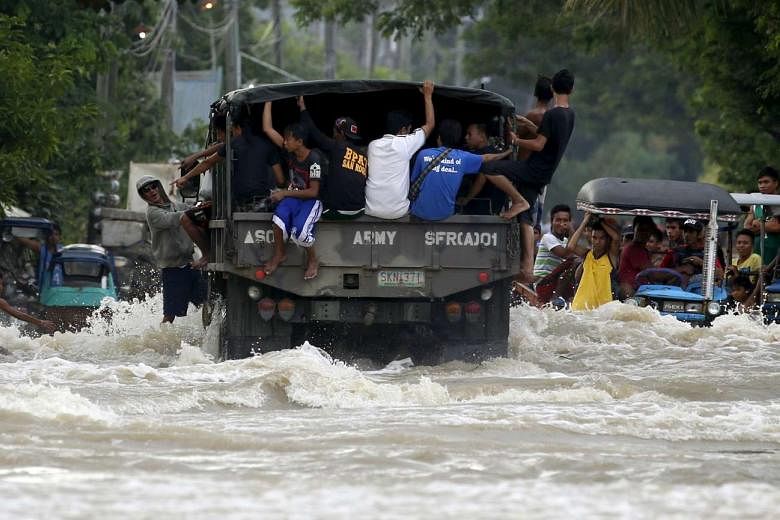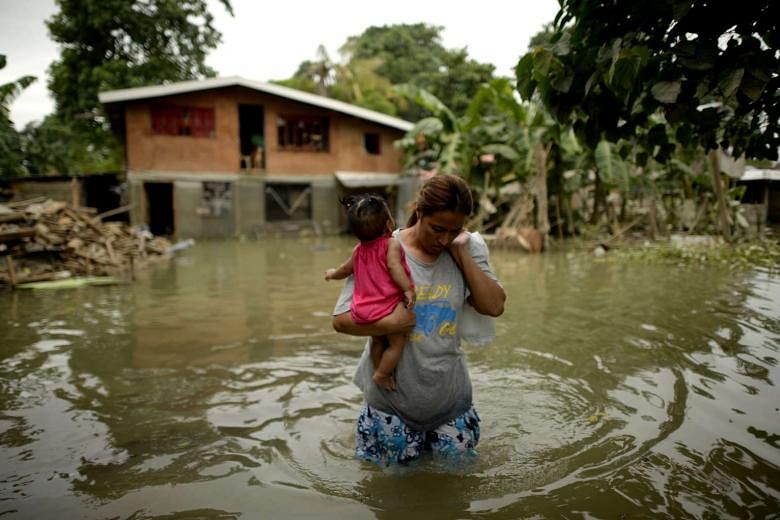MANILA (AFP) - Widespread flooding in the Philippines caused by a powerful typhoon eased on Wednesday (Oct 21), but the storm's death toll climbed to 47 and tens of thousands of people remained in evacuation centres.
As the weather improved three days after the onslaught of Typhoon Koppu, officials were also counting the cost of ruined crops and drowned livestock from heavy rain that flowed into the vast farming regions north of Manila.
"Although the water is still flowing downstream, it has started to subside in some areas," Mr Mahar Lagmay, director of a government project to mitigate the impact of natural disasters in the Philippines, told AFP.
Heavy rains across the mountainous northern Philippines, the cause of most of the flooding in the farming plains, had also eased, according to Lagmay and a local civil defence official.
But 17 people had died across the central farming regions of Luzon, according to an AFP tally based on confirmed figures from national and local authorities.
More than 300 villages had been submerged across the central farming regions of Luzon on Monday and Tuesday, with the flooding consuming entire homes in some areas.
But the flooding had not subsided completely yet, forcing more than 107,000 people to remain in evacuation centres, according to the country's disaster management agency.
The deaths in the flooded areas were caused mostly by drowning, but also electrocution and crumbling walls, while one person died due to a snake bite.
Another 16 people were killed in the mountain regions, where the intense rain triggered landslides that buried homes and destroyed roads, Ivy Carasi, a spokeswoman for the regional civil defence office, told AFP.
Elsewhere, across the country, 14 people were killed in the bad weather, bringing the total to 47.
The previous day's death toll had been 22. But the figure climbed partly due to reports coming in from remote areas, and not just because of new deaths on Tuesday and Wednesday.
The state weather service said Koppu melted into a tropical depression off Luzon's north coast early Wednesday with winds of 55 kmh.
When it first struck the east coast of Luzon on Sunday morning, its gusts were 210 kilometres an hour, making it the second strongest storm to hit the Philippines this year.
The Philippine islands are often the first major landmass to be hit by storms that emerge over the Pacific Ocean. The South-east Asian archipelago endures about 20 major storms each year, many of them deadly.
The most powerful storm ever recorded on land, Super Typhoon Haiyan, hit the central Philippines in 2013, leaving at least 7,350 people dead or missing.
